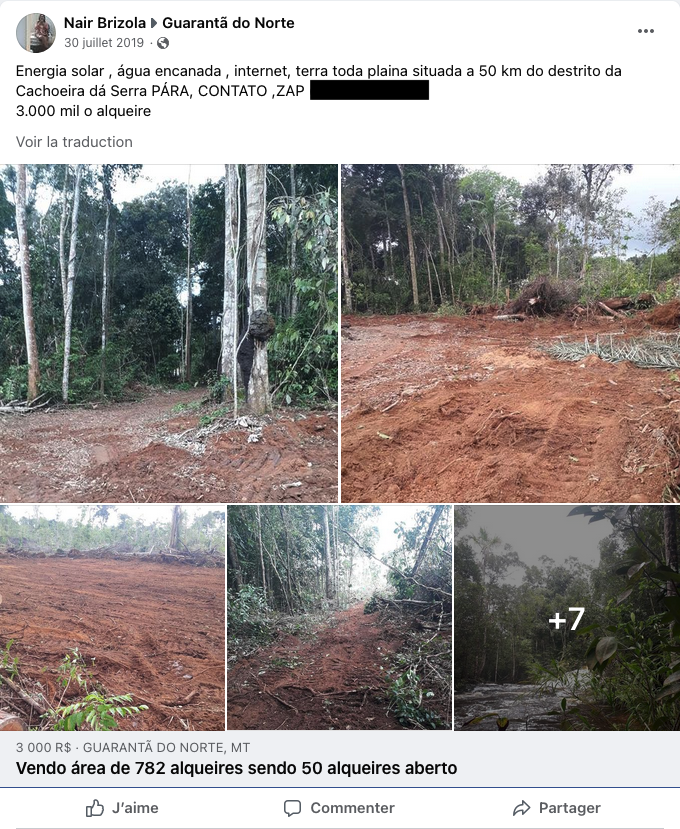Journalist Dom Phillips was working on a book: “How to Save the Amazon.” He never published it.
On June 5, 2022, he was killed with his guide Bruno Pereira, an expert on indigenous communities, in the Javari Valley.
1/10
#BrunoDomProject
forbiddenstories.org/dom-phillips-w…
On June 5, 2022, he was killed with his guide Bruno Pereira, an expert on indigenous communities, in the Javari Valley.
1/10
#BrunoDomProject
forbiddenstories.org/dom-phillips-w…
In this dangerous territory the size of Austria, Pereira helped indigenous communities document environmental crimes.
🎣Among them was illegal fishing, the subject that initially led Phillips to report from this region.
2/10
🎣Among them was illegal fishing, the subject that initially led Phillips to report from this region.
2/10
This territory “belonged exclusively to indigenous populations,” as one of Pereira’s former colleagues explained.
Entering it without permission in order to pilfer resources is considered a “constitutional crime.”
3/10
Entering it without permission in order to pilfer resources is considered a “constitutional crime.”
3/10
This photo, taken two days before the murder, was found on Pereira’s cellphone, found on the scene of the crime several months later.
In it, Phillips speaks with a man accused by indigenous communities of illegally fishing in their territory.
4/10
In it, Phillips speaks with a man accused by indigenous communities of illegally fishing in their territory.
4/10

In the Javari Valley, one fish is particularly sought after: the pirarucu.
The fish can weigh up to 200 kilograms (440 lbs) and measure 3 meters (nearly 10 feet).
The biggest fish in South America, it is included in cuisines from Lima 🇵🇪 to São Paulo 🇧🇷 to Bogotá 🇨🇴
5/10
The fish can weigh up to 200 kilograms (440 lbs) and measure 3 meters (nearly 10 feet).
The biggest fish in South America, it is included in cuisines from Lima 🇵🇪 to São Paulo 🇧🇷 to Bogotá 🇨🇴
5/10
In this region, where the borders of Brazil, Colombia and Brazil converge, the pirarucu is increasingly over-fished, meaning fishermen increasingly venture into indigenous lands to find it.
They then take advantage of lax border regulations to resell their haul.
6/10
They then take advantage of lax border regulations to resell their haul.
6/10
The suspects in the murder of Pereira and Phillips had been for a long time denounced as illegal fishermen by Univaja.
But the Brazilian justice system went a step further, suggesting organized criminal activities.
7/10
But the Brazilian justice system went a step further, suggesting organized criminal activities.
7/10
The suspected mastermind, investigators wrote in a document @FbdnStories obtained, heads a “criminal organization” in the Javari Valley.
8/10
8/10
“It is clear that there are associations that are not only financing illegal fishing, but could also be using [illegal fish] to launder drug money,” the authors of a report by the parliamentary commission dedicated to investigating the murders wrote.
9/10
9/10
According to Brazil’s environmental authority, the mastermind “allegedly controls the sale of illegal fish and drugs in the region”
✍️ Read the article by @Cecileski with @mrnaabr @Ojo_Publico @amazonia_real @tvglobo @globoplay @guardian
10/10
bit.ly/3N6IcC1
✍️ Read the article by @Cecileski with @mrnaabr @Ojo_Publico @amazonia_real @tvglobo @globoplay @guardian
10/10
bit.ly/3N6IcC1
• • •
Missing some Tweet in this thread? You can try to
force a refresh

 Read on Twitter
Read on Twitter












